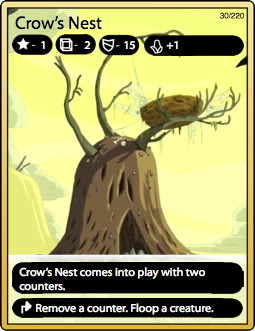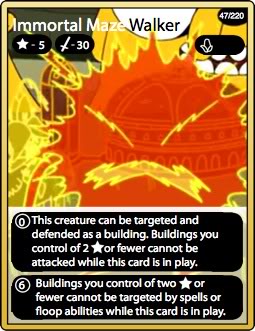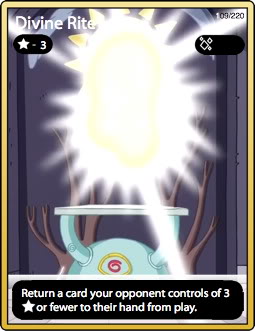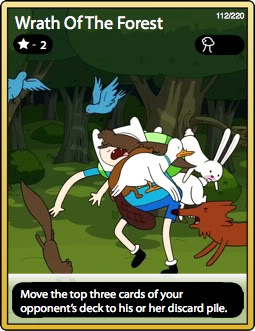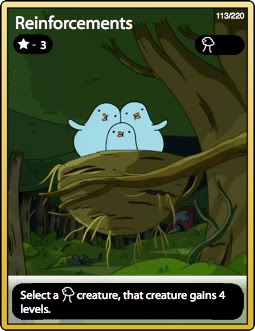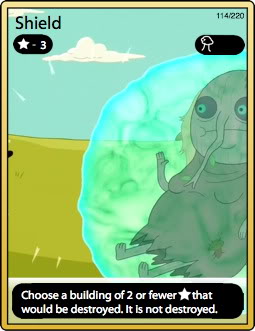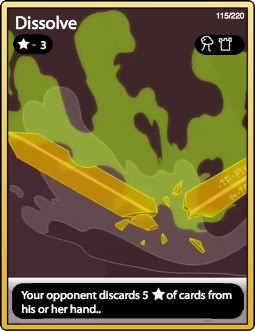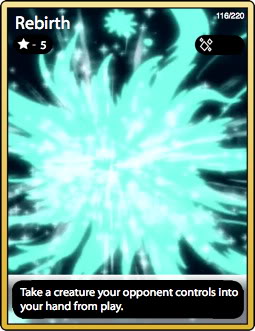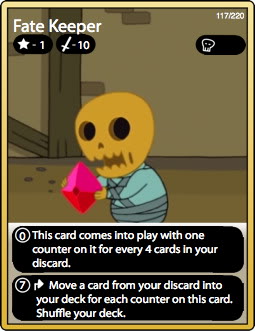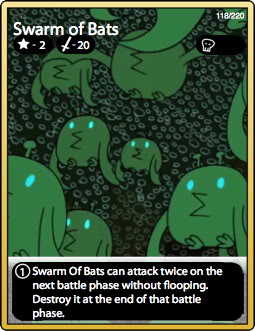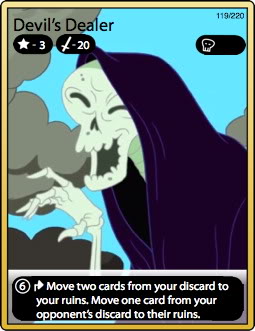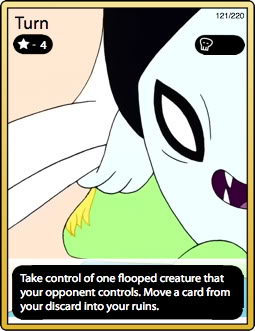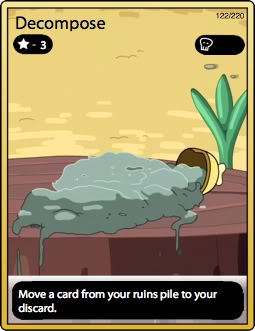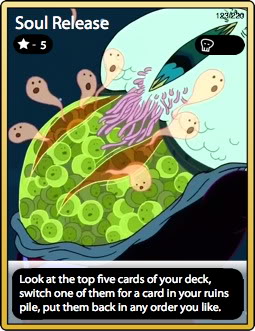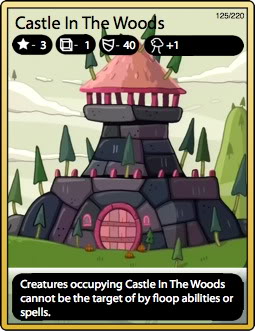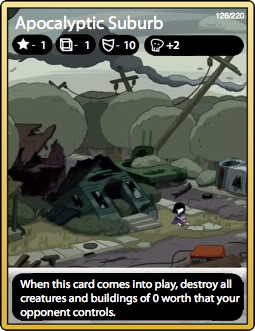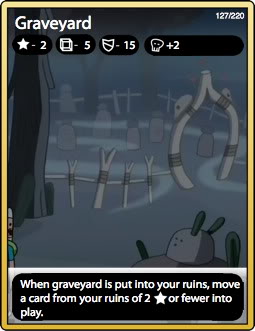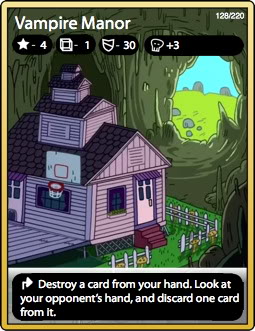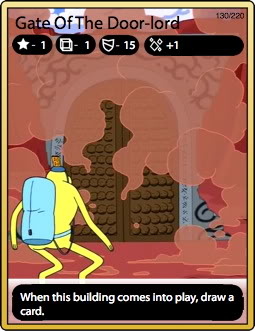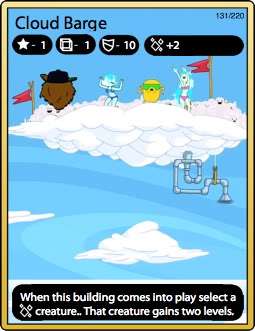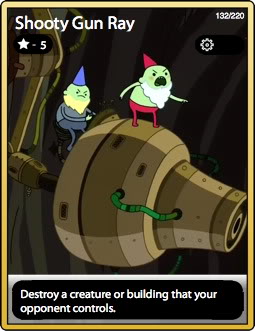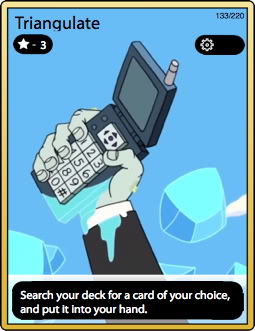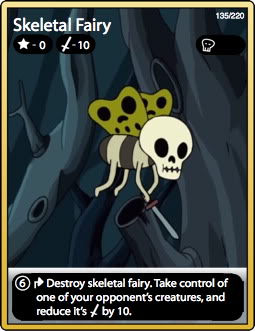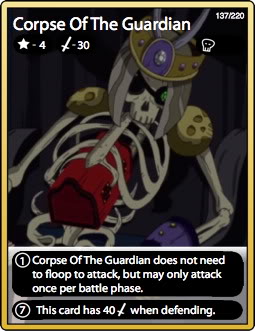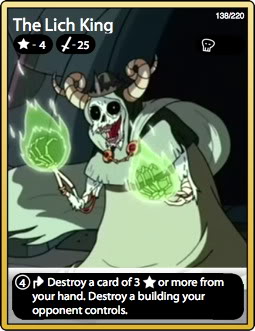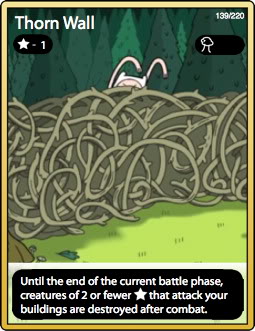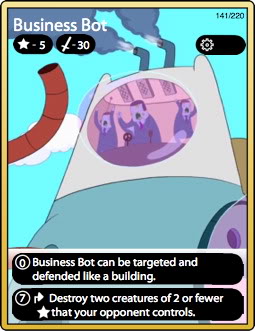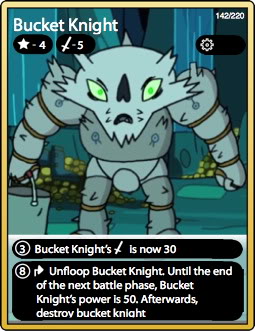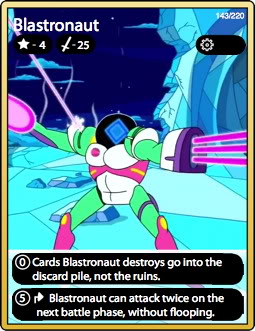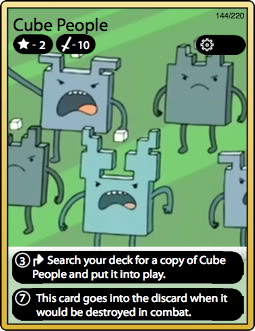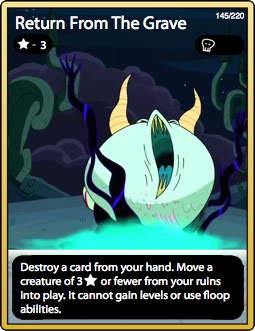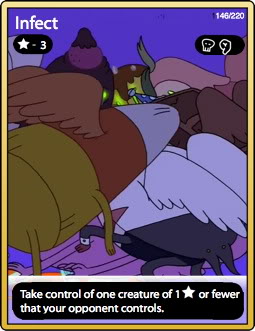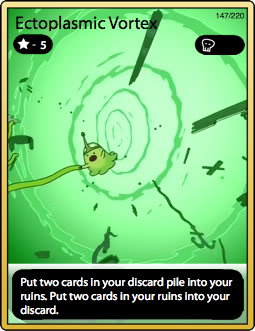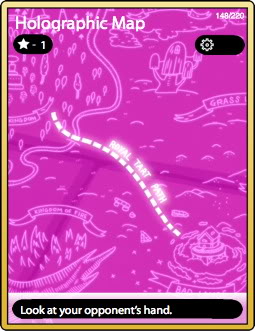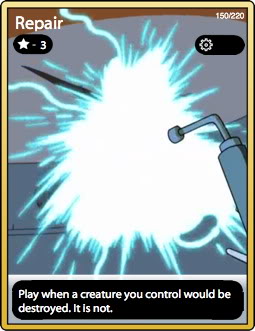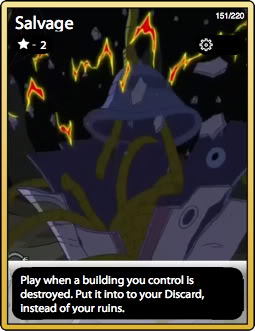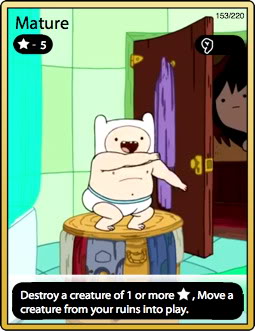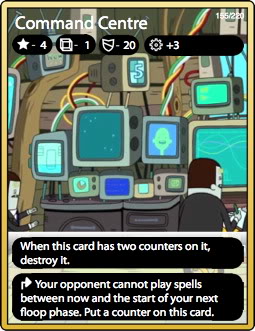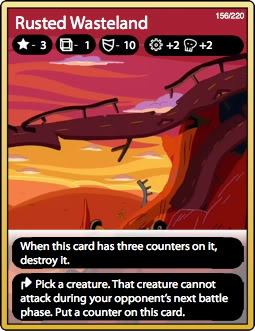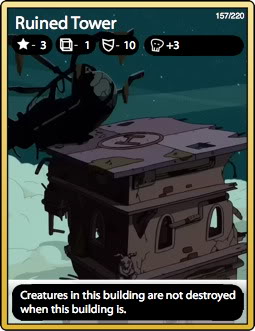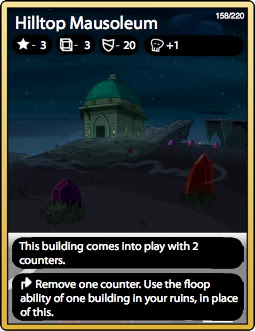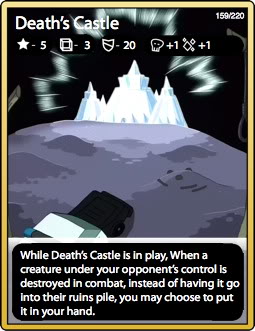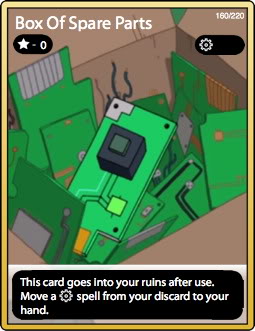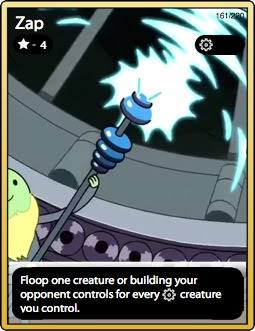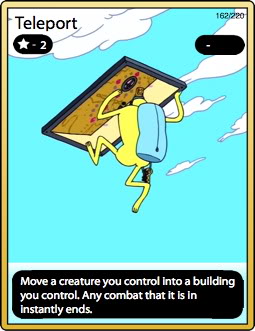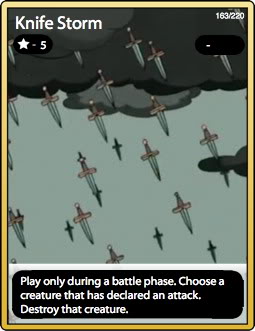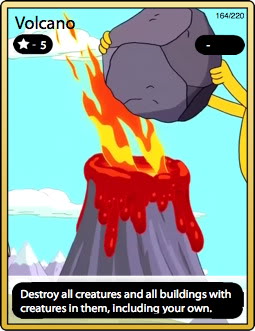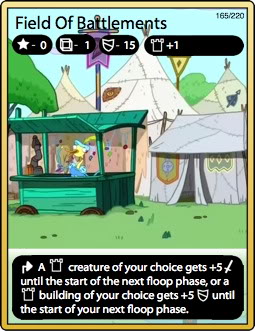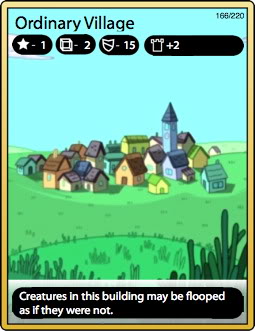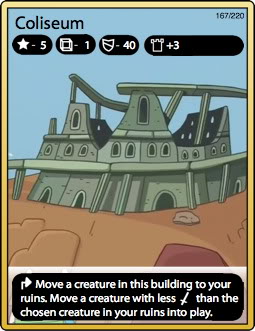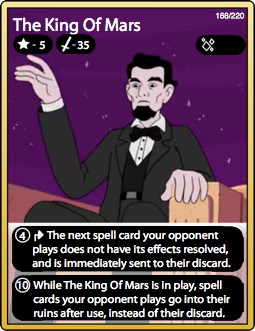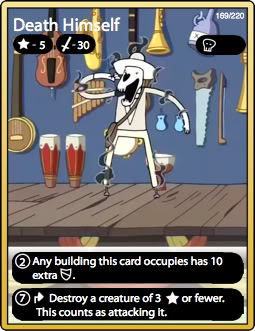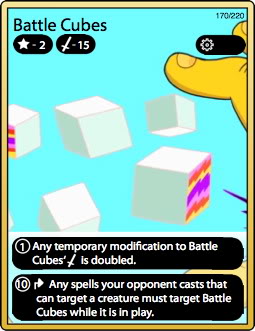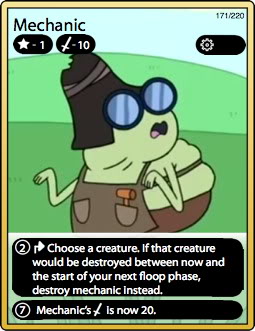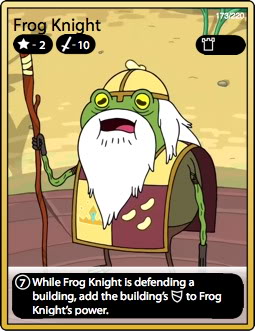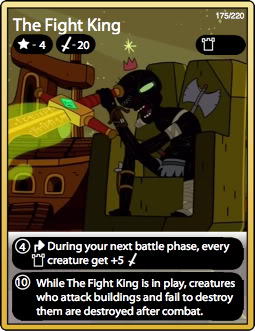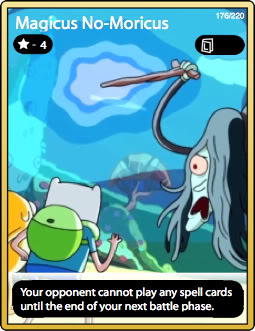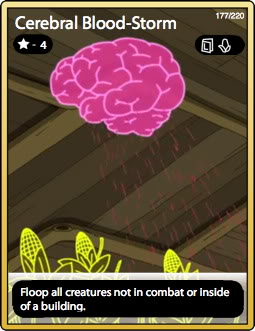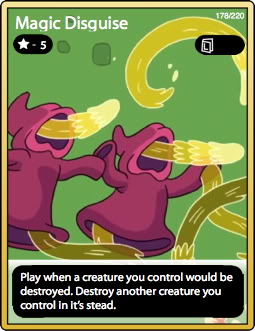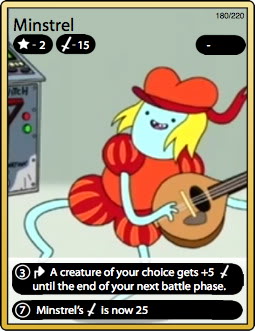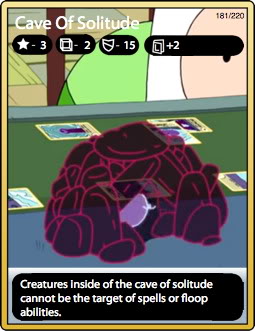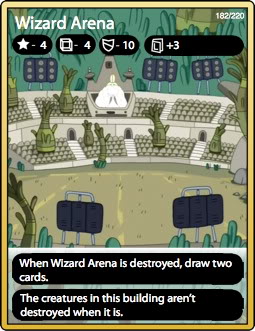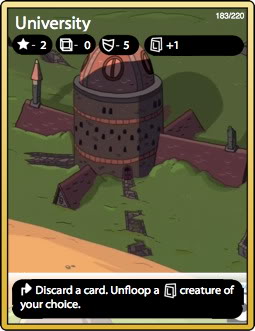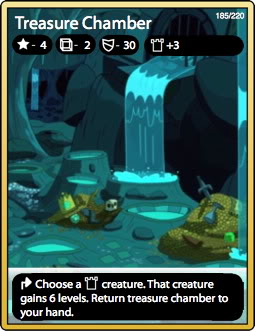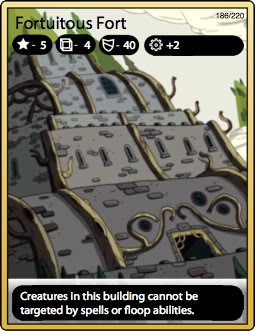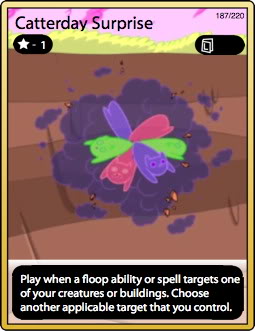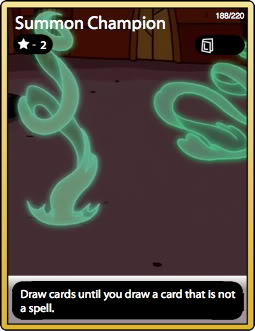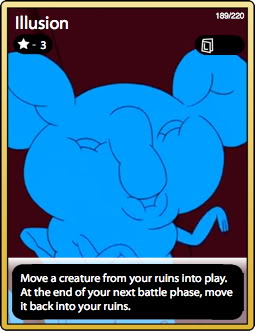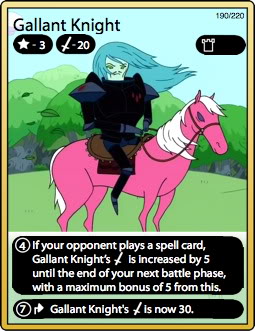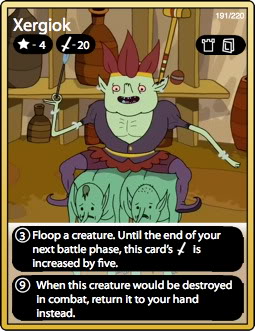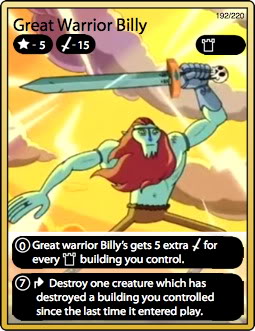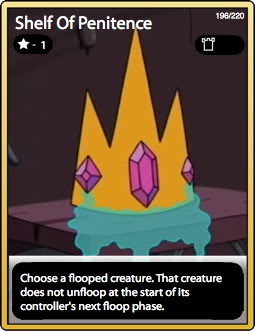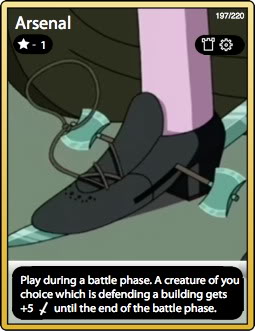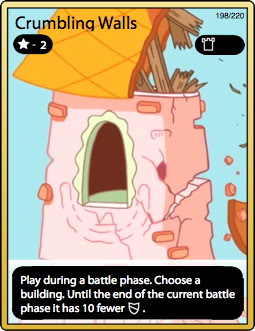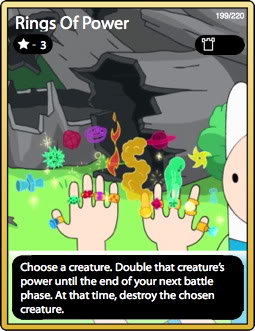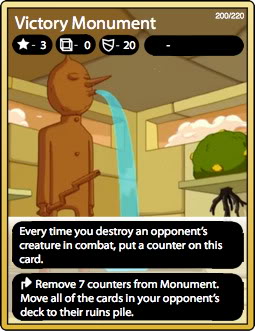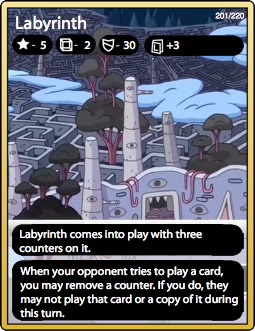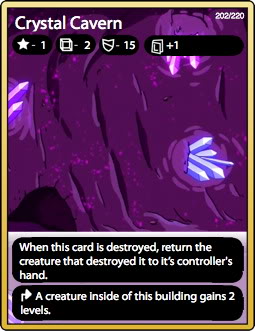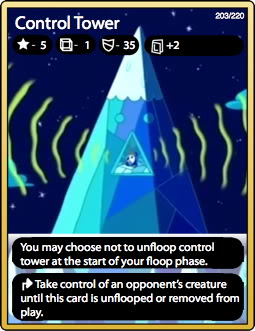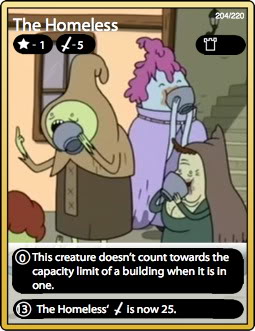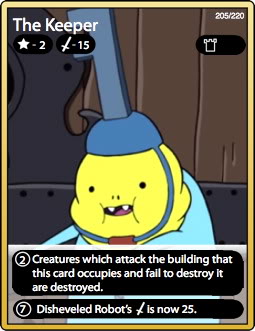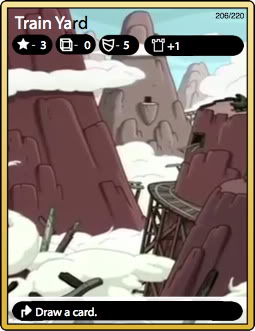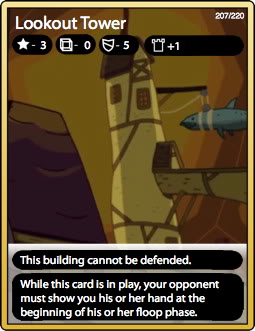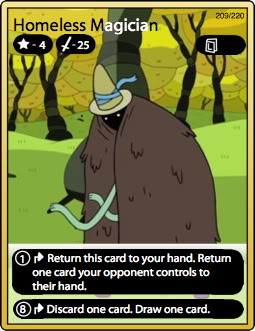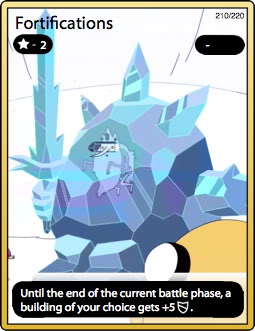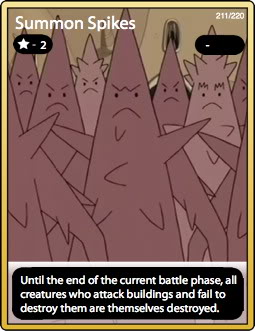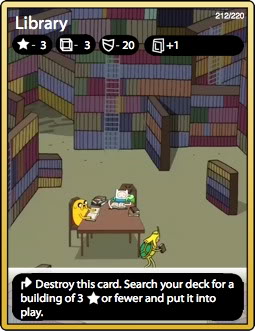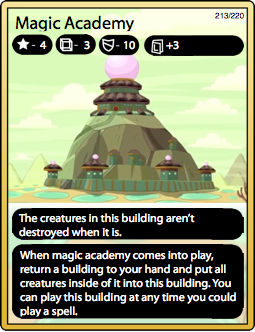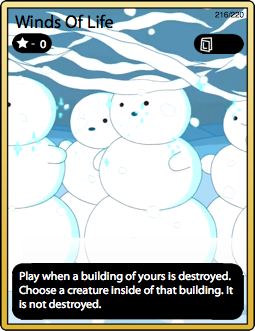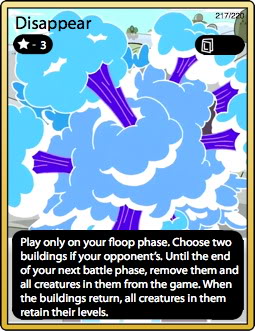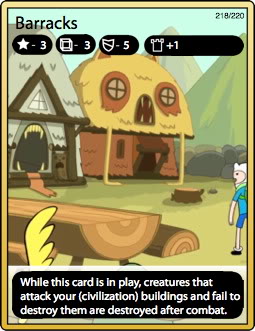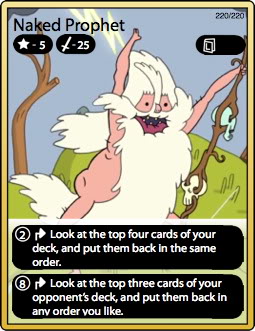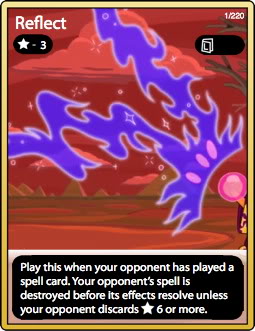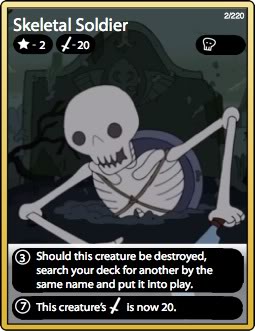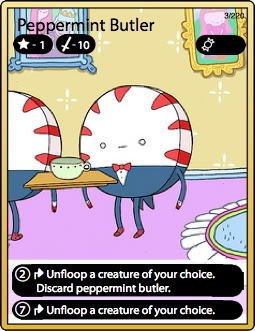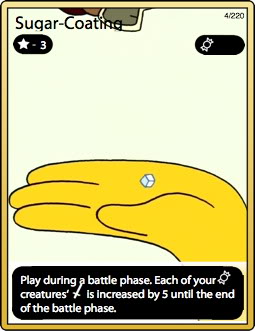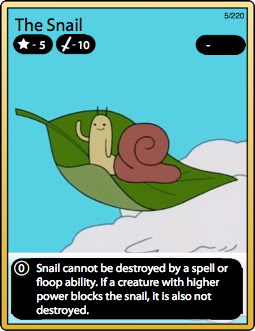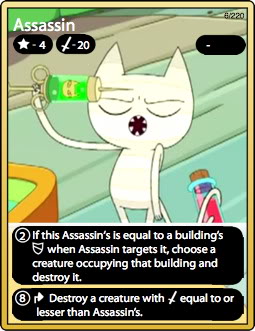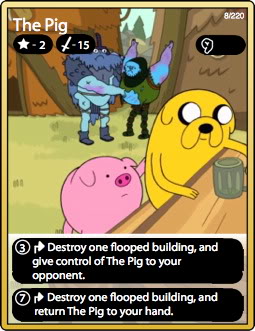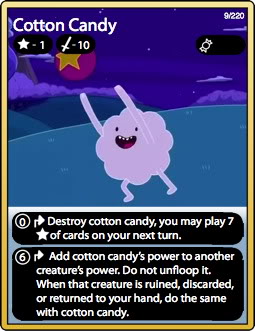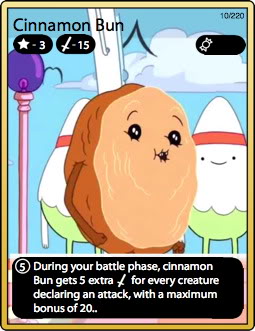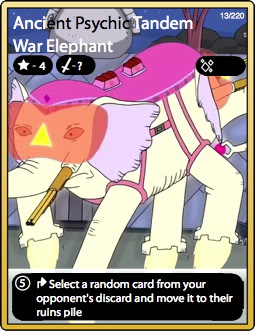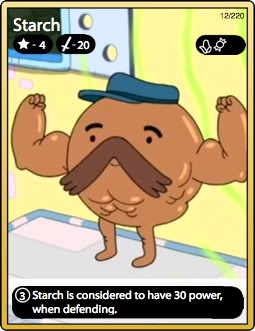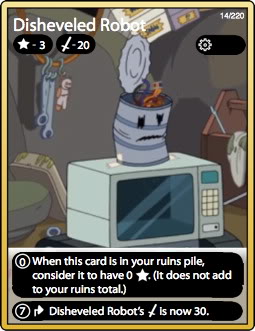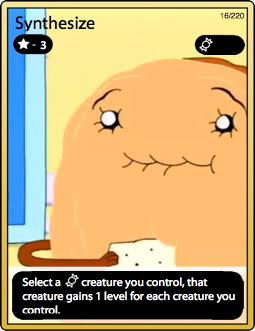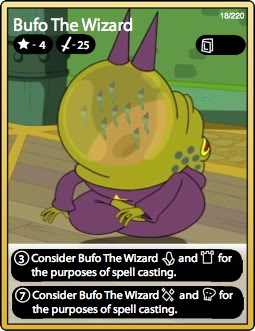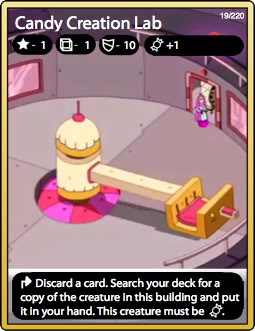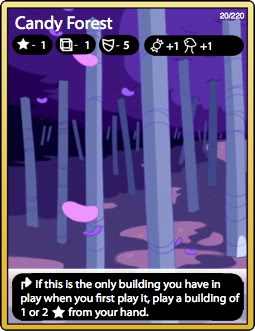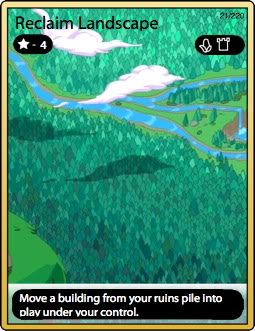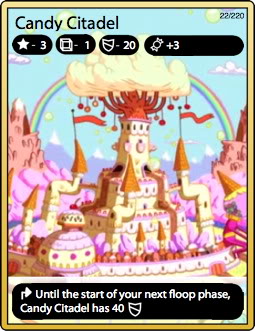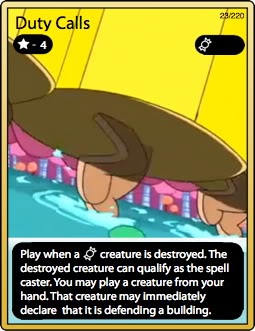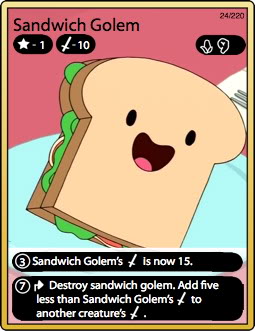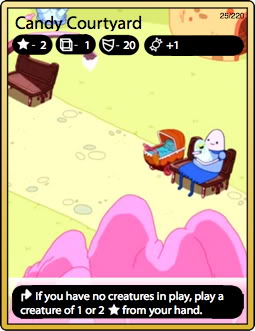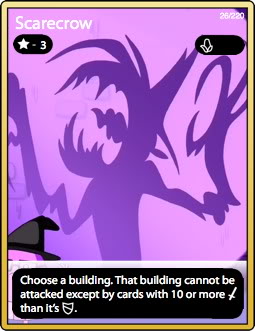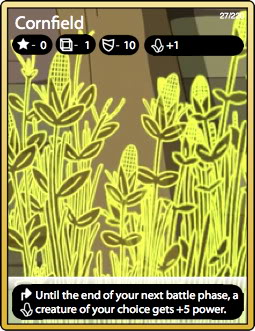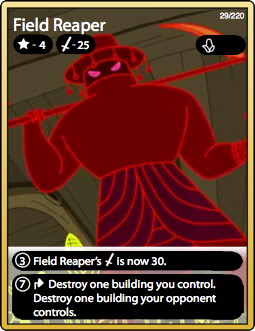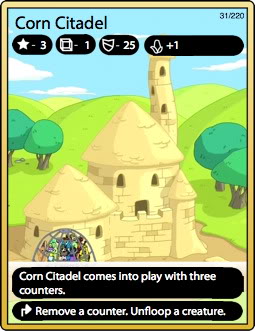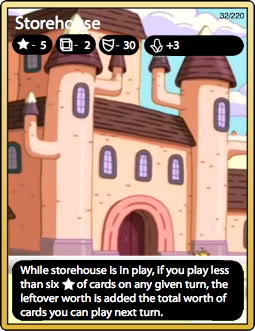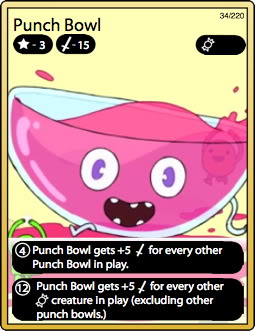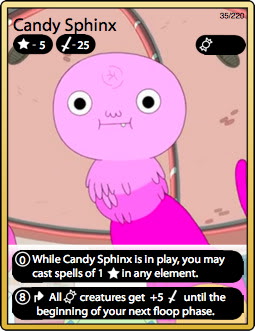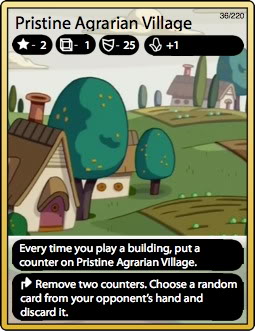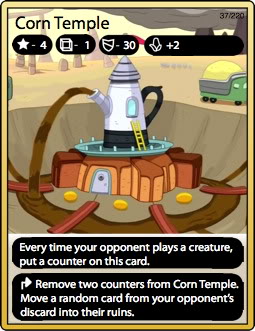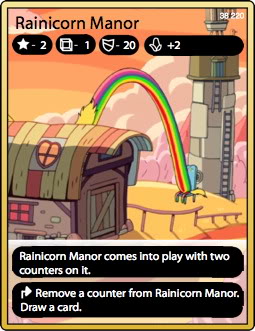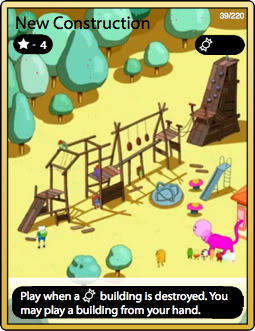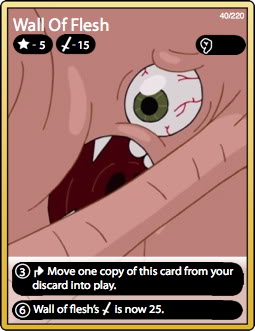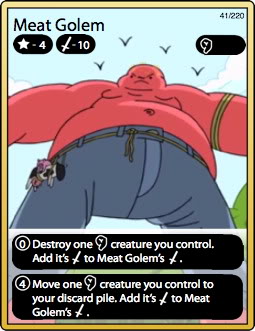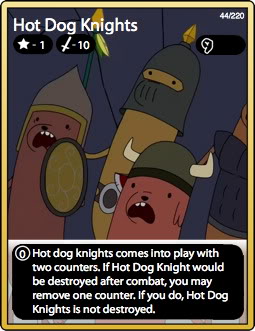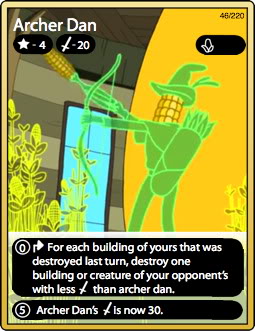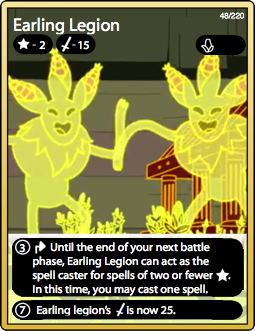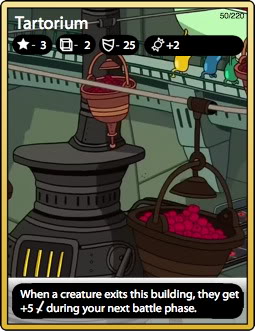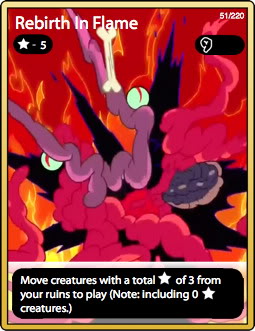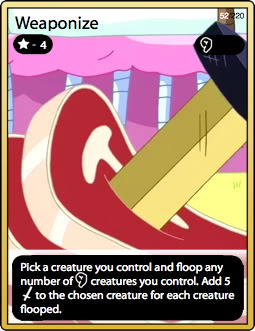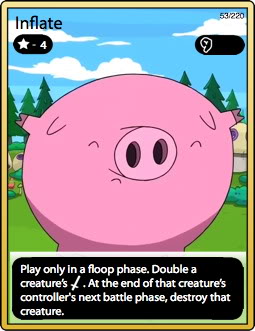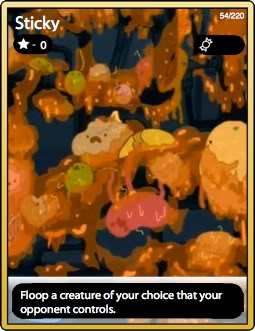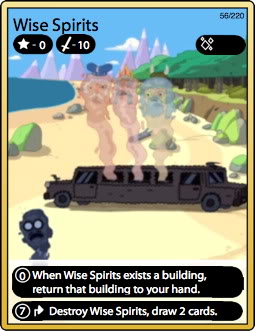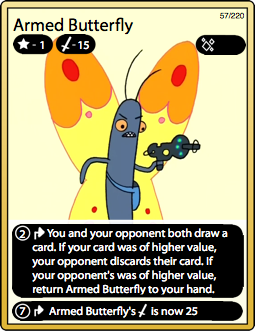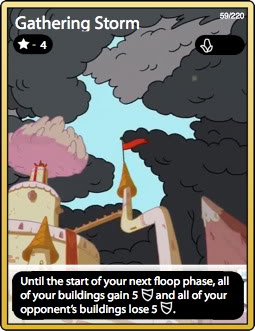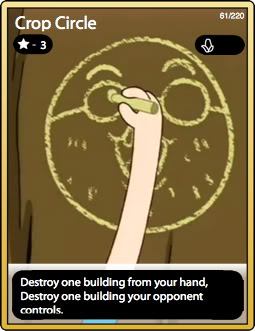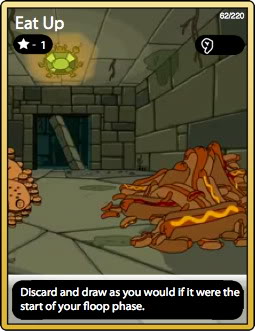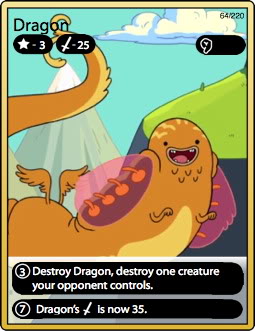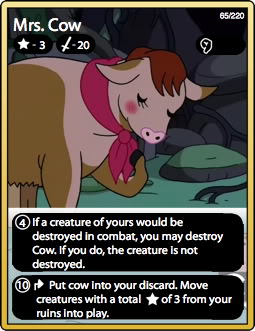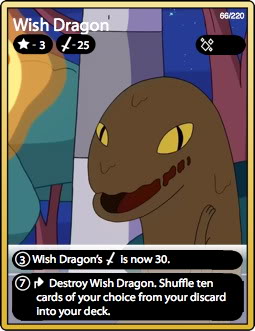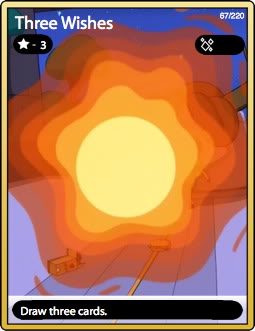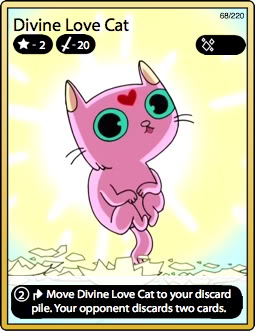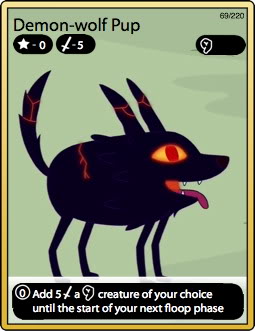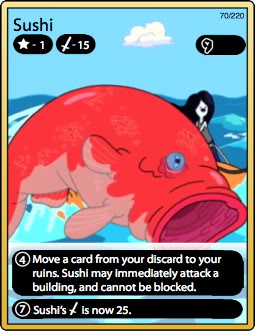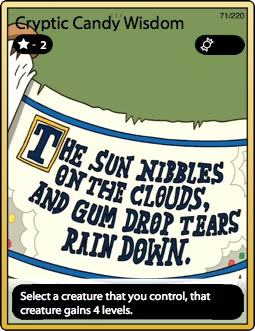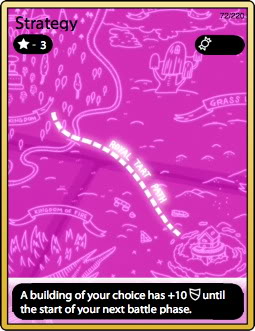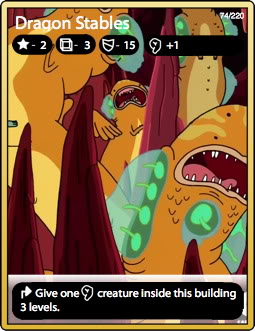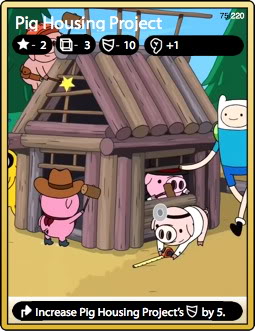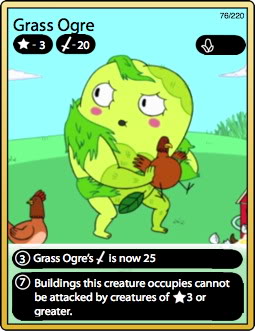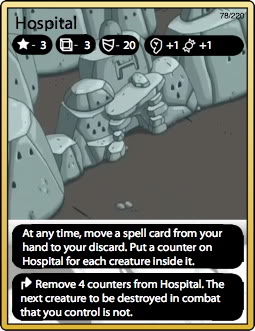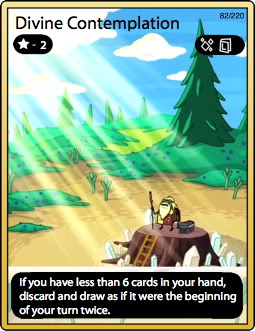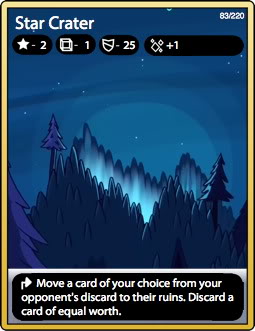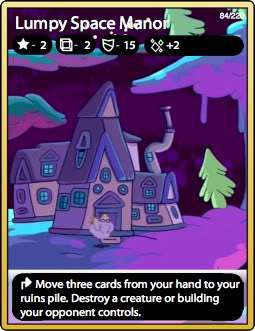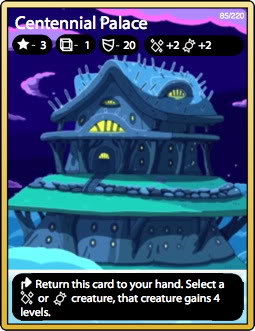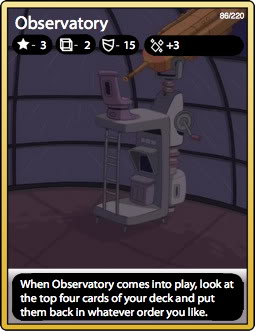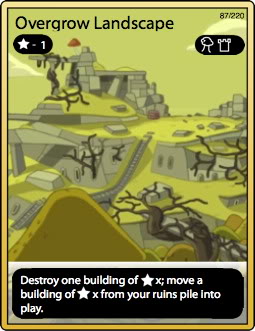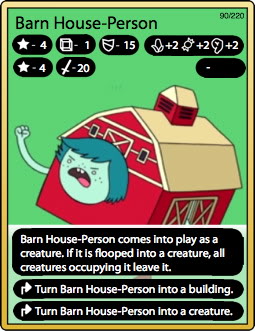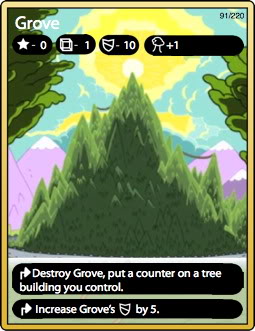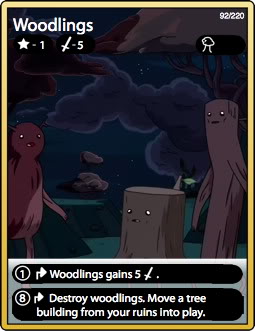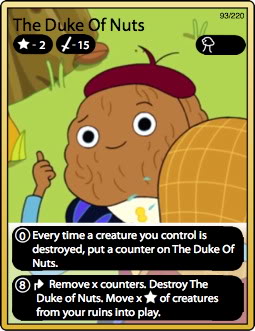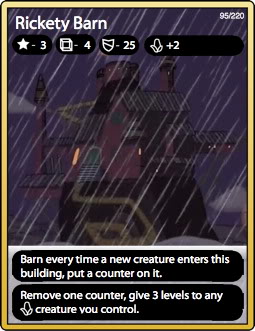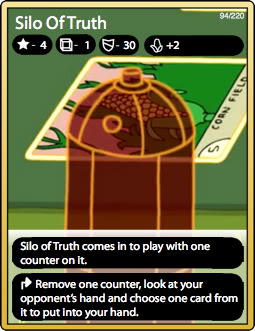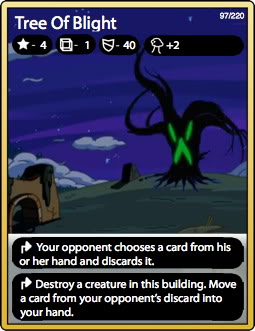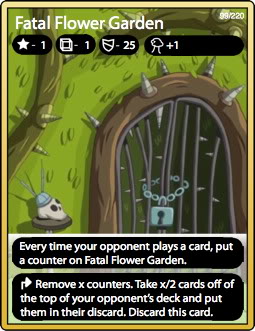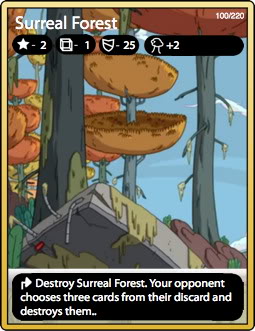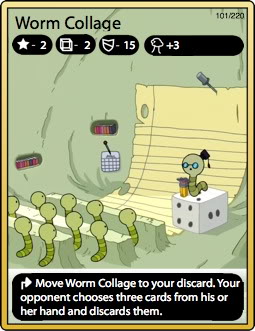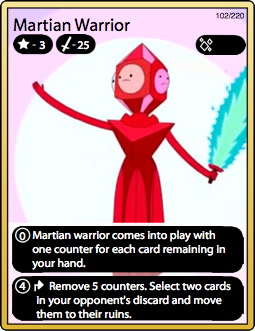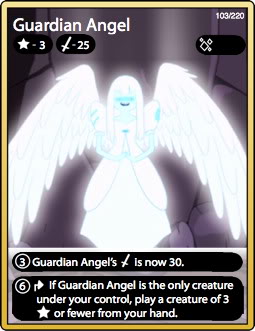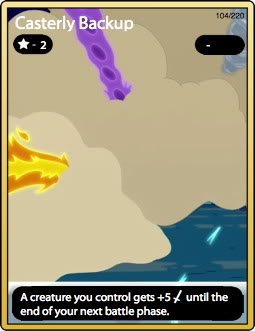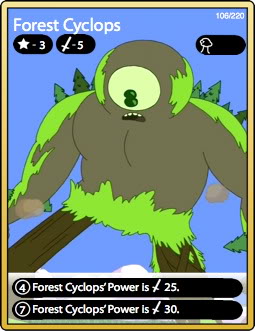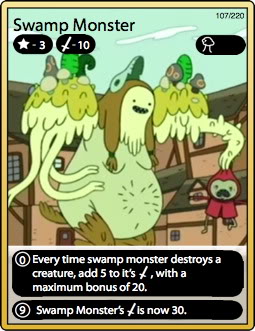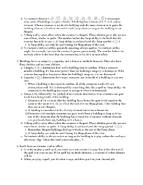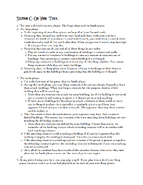
|
"Кто-нибудь знает, что имеет в виду Ледяной Король?!" Это незавершённая статья и содержит неполную информацию. Вы можете помочь Wiki Времени Приключений, дополнив её. Спасибо! |
Это неофициальная версия легендарных карточных войн. Тут есть все карты и правила для игры
Что надо чтобы сделать игру[]
1. Цветной принтер
2. Бумага
3. Ламинатор (необязательно)
Карты[]
Состав: Всего 220 карт.
Правила[]
Кому нравится правила в формате jpg.
А кому в txt. то вот.
Правила[]
~ Card wars ~
The Adventure Tune card game
SECTION A: SETUP
/.To play a game of cardwars, you need a deck of exactly forty cards. You cannot have any more than three copies of any single card in your deck. Beyond those two rules, you can compose your deck however you like.
2. There are five different places that your cards can be during the game. Your deck, your hand, your discard, your ruins pile, and in play.
a. At the start of your game, all 40 of your cards are in your deck. You shuffle it. and after that you can’t look into it unless a card specifically tells you to.
L When there are no cards remaining in your deck pile, you lose the game.
b. After that, you draw cards from your deck until you have 20 worth ( ) of cards inyour hand.
L Worth is explained later, for now just know that different cards have different worths, which vaiy from zero to five. iL You will almost never get exactly 20 worth of cards, but as soon as you draw a card that puts your hand's worth at or over 20, stop drawing
c. Cards go into your ruins pile when they are destroyed in combat (see page #)
L When you have 20 worth of cards in your ruins, you lose the game. For this purpose, pretend that cards with 0 worth have 1 worth.
d. Spells go into your discard after you play them, and when you draw, (see page #)
е. Cards that are in play are laid out onto for both players to see. There is no limit to the number of cards that you can have in play or your opponent can have in play-
/. Cards that are in play can be flooped. That is the major difference between them and cards in your hand/deck. When spells are played, you just do what they say and send them to the discard.
SECTION B: THE TYPES OF CARDS/.
There are three types of cards. Creatures, Buildings, and Spells
a. All of these card types, in common, have a worth of any value from zero to six.
2. Creatures had a power, an element, and a level. They also have floop abilities and intrinsic abilities.
a. Power determines how well creatures do in combat. When a creature attacks a building, if it has more power ( ?/ ) than the buildings integrity it destroys it. If the creature has equal or less power than the buildings integrity it is not destroyed.
b. A creature’s element ( , , , , , , , , ) determineswhat sorts of buildings can give it levels. A building has a bonus of 1, 2, or 3, and an element. When a creature is inside of a building with the same element as it, gains the buildings bonus at levels at the end of each floop phase as long as the building is not flooped.
c. A floop ability takes effect when the creature is flooped. Floop abilities generally1 are oneshot effects, similar to spells. The number before the floop ability is the level that the creature has to be to use it. A floop ability is prefaced with the floop symbol. ( . )
L A floop ability can only be used during the floop phase of the turn.
d. A creature’s intrinsic ability, generally speaking, always applies. An intrinsic ability might, for example, increase the creature’s power permanently. The number before the intrinsic ability is the level that the creature has to be for it to take effect.
5. Buildings have an integrity, a capacity, and a bonus or multiple bonuses. They also have floop abilities and intrinsic abilities.
a. Integrity ( ) determines how well a building does in combat. When a creatureattacks a building, if it has more power than the buildings integrity it destroys it. If the creature has equal or less power than the building’s integrity it is not destroyed.
b. Capacity ( _ ) determines how many creatures can be inside of a building at any one time.
L When a building is destroyed in combat, all of the creatures inside of it aredestroyed as well. If it is destroyed by something else, like a spell or floop ability, the creatures in the building just cease to occupy it when it is destroyed.
c. Bonus (+#), followed by the symbol of an element, determines what creatures can gain levels from being inside of the building.
L Creatures of the element that the building has a bonus for gain levels equal to the value of the bonus (+1, +2, or +3) at the end of every floop phase, if the building that they are in isn’t flooped.
ii. A building is considered to be of every element that it has a bonus for.
ULCreatures with multiple elements can gain levels from a building so long as it has one of the elements that the building has a bonus for. Creatures without elements can gain levels from any building with a bonus.
d. A floop ability takes effect when the creature is flooped. Floop abilities generally are oneshot effects, similar to spells. A floop ability is prefaced with the floop symbol. ( • )
L Remember, flooped buildings don’t give levels at the end of the floop phase.
ii. A floop ability can only be used during the floop phase of the turn.
e. An intrinsic ability is always active as long as the building is in play unless the card says otherwise, (lig: "when this card comes into play...”)
•/. Spells have an element, and an effect
.a. In order to play a spell card, you must have one creature in play that is the element of the spell you want to use. If the spell has multiple elements, a creature of either element will do.
b. When you play a spell, you do what it says, and then put it in your discard pile.
Section 0 ON Your Turn..
/.The turn is divided into two phases. The floop phase and the battle phase.
2. The floop phase:a. At the beginning of your floop phase, unfloop all of your flooped cards.
b. Following that, discard one card from your hand and draw cards until you have recovered it s worth (If you discard a card with 4 worth, you could draw a card of three worth first and a card of five worth after that. When you go over 4 worth, stop drawing)
i. If it is your first turn, skip this.
c. Following that you can do any and all of these things in any order:
i. Play six worth of cards, in any combination of buildings, creatures and spells.
ii. Put any amount of creatures in buildings or take any amount of creatures out of buildings. You cannot put a creature into a building if it is flooped.
uLFloop any creatures or buildings to activate any of their floop abilities. You cannot floop creatures while they are inside buildings.
d. Following that, the floop phase ends. Creature who are in buildings of their element gain levels equal to the buildings bonus providing that the building isn’t flooped.
5. The battle phase:
a. If it is the first turn of the game, skip the battle phase.
b. During the battle phase, you may floop creatures (who are not already flooped) to have them attack buildings. When you floop a creature for this purpose, declare which building they will lie attacking.
L More than one creature can attack the same building, but if the building is destroyed and a creature is still waiting to attack it, it doesn’t get to attack anything.
ii. If there are no buildings for the player to attack, creatures of three worth or more can be flooped to allow their controller to randomly select a card from their opponent's hand and put it in their ruins pile. The opponent then may draw another card to replace it.
c. After the creatures have declared attacks, your opponent may have their creatures defend buildings. This means that creatures who were attacking those buildings are now attacking the defending creatures.
L More than one creature can defend the same building. If more than one is, the controller of the building decides which defending creature will be in combat with each attacking creature.
d. If the attacking creature is still attacking a building, if its power is greater than the building’s integrity the building is destroyed. If not the creatures attack fails.
e. If the attacking creature is attacking another creature, if its power is greater or equal to the defending creature’s power, the defending creature is destroyed. If not, the attacking creature is destroyed.
f. Once all of the combats have been resolved (the attacker chooses what order they take place in) the battle phase is over, and the next player’s turn begins.
9-
j. At any point during your turn, you may plav a spell. If you play it outside of your floopphase however, treat it as if you had played it at the start of your next floop phase.
a. So. if during your battle phase you plav a spell with two worth, it’s effects resolve in the battle phase, but on your next floop phase you can only play four worth of cards.
b. You cannot play more than six worth of spells between floop phases, because that wouldn’t make any sense at all.
SECTION ABBREVIATIONS, CLARIFICATIONS, AND CARD SPECIFIC RULES
1. Whenever a card tells you to search through your deck, shuffle the deck afterwards.
2. When a creature's passive ability says that it's power changes, it means that it's base power changes. After the change, all bonuses and penalties applied to it externally still apply to it.
5. When a creature is destroyed, discarded, or returned to your hand, it reverts to level 0.
•/. If a card gives you a condition (eg. If you have no creatures in play) and that condition is not met, do nothing.
5. "The spellcaster" refers to the creature of the required element for the spell in question to be cast. If there is more than one creature who can fulfill that requirement, the player casting the spell chooses one.
6. When a card tells you to put something "in play" it means to put it under your control.
7. When a card tells you to add or subtract a creature’s power from or to something, it refers to its permanent power. Bonuses or penalties that go away before the creature is removed from play are not included in this.
8. When a card is destroyed, discarded, or returned to your hand from play, all bonuses, penalties, and counters are removed from it. If it comes into plav again, it should be treated as if it was being played for the first time.
9. When a card tells you to discard without specifying further as to what, it means move a card from your hand to your discard pile. If a card's ability specifies that it should be discarded, it means to move that card to your discard pile from play*
10. When a building card is returned to your hand, all of the creatures occupying the building remain in play.
11. When a card tells you to destroy another card, unless it notes or otherwise, that card must be in play.
12. When anything tells you to choose a card, you are targeting that card. If something specifies that you cannot target that card, you may not choose it.
15. When something calls for a card to be destroyed, it means put it in your ruins pile.
/-/. When a card is discarded, it is put into the discard of the player who owns it. When a card is ruined, it is put into the ruins of the player who controlled it when it was ruined.
15. .Just to be absolutely clear, whenever a building is destroyed in combat all of the creates in that building are also destroyed. When it is destroyed by a spell or a floop ability, the creatures in it remain in play.
| ||||||||||||||

